To many Americans, Florida is the go-to state for swimming, relaxing, and having leisure time. What most people don’t know is, the Sunshine State has a fair share of greenland, covered in 12 national parks, 37 forests, and 175 parks.
It’s no wonder that prey birds find it a hot attraction. In the end, they have 196 bird species to feed on, along with a vast green land welcoming them all year long.
Besides, whenever they feel bored with their bird life, they can always take a swim in the Silver Glen springs!
Here are 18 birds of prey in Florida, the largest non-tropical wilderness in the US!
18 of the Most Common Florida Birds of Prey
1. Sharp-Shinned Hawk

Sharp-shinned Hawks are the smallest hawks in Florida, and they’re known for making appearances in backyards. If you have a bird feeder, you better install a hawk-proof baffler because they love feeding on songbirds.
These fellows are common in Florida in forests. You can quickly identify them because of their long legs compared to their size. When they’re in flight, you’ll see their wings spread behind them, looking like a kite.
2. Red-Shouldered Hawk
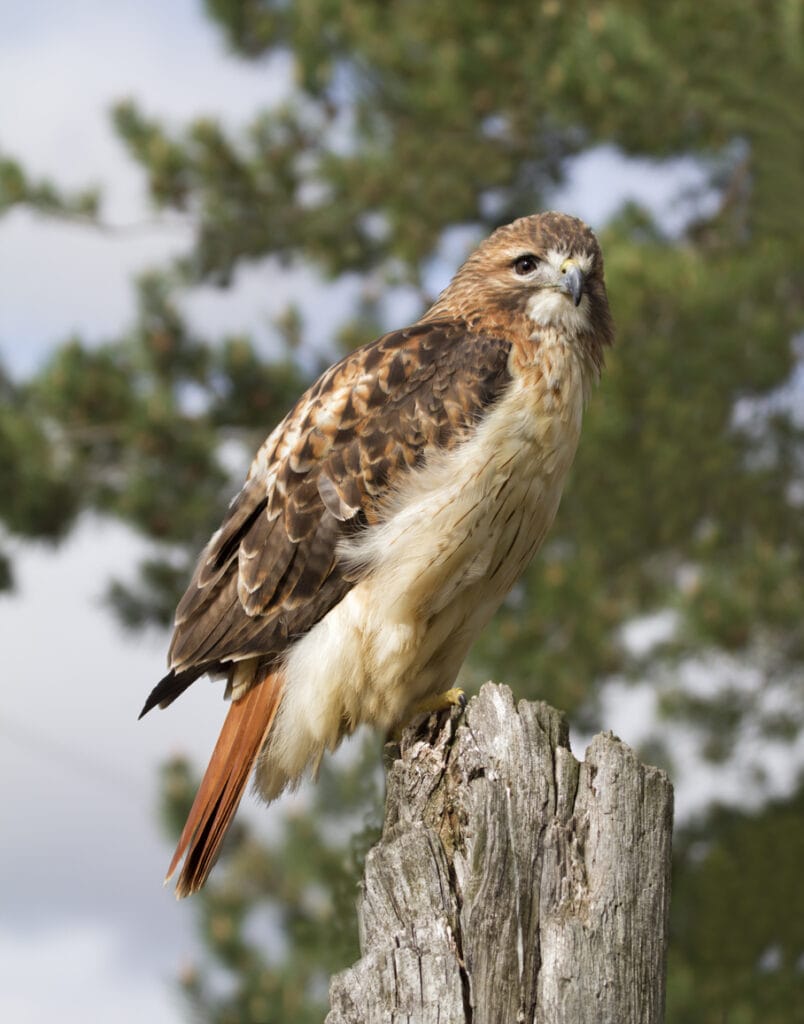
A few years back, red-shouldered hawks were endangered in the US because of wooded areas clearing. Luckily for bird watchers, their numbers are now rising again, and they’re pretty popular in Florida.
Author Note: They stay in the state for the whole year, close to woodlands and forests. Their populations are the largest in southern Florida.
Red-shouldered Hawks hunt for most of their days. So if you happen to see them, they’ll likely be circling close to their nests, looking for prey to feed on.
3. Cooper’s Hawk
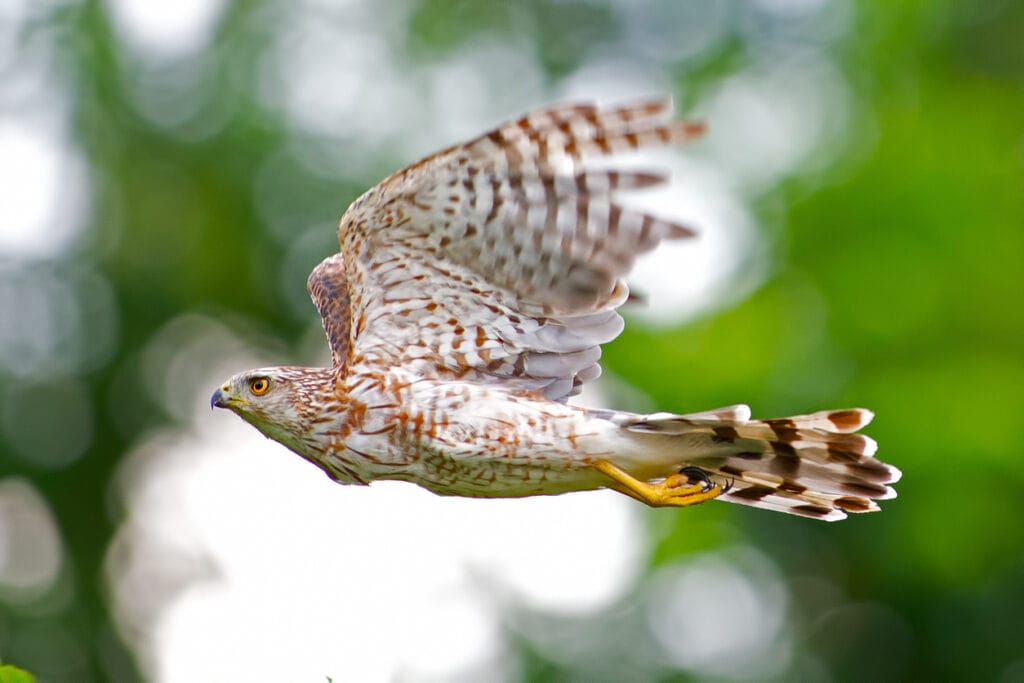
Another common Florida bird of prey is the Cooper’s Hawk. These hawks and the Sharp-shinned Hawks are practically twins. If not for their different genetics, you’d think they’re the same bird. However, the Cooper’s Hawks are larger.
Author Note: These predators stay in Florida for the whole year, stalking and feeding on all kinds of birds. They prefer staying in forests and wooded areas, but some stray birds find their way to backyards.
The thing about Cooper’s Hawks is, they don’t just capture their prey and bite into them. Instead, they like to put on a show of violence, squeezing their prey until it’s dead. Then, they have their meal and go about their day.
4. Bald Eagle

Bald Eagles have always been portrayed in our minds as the bad guys. It may be because of the cartoons that illustrated them like this, but it’s mostly because their feeding habits don’t exactly scream noble.
These opportunistic predators won’t leave a chance to steal food from another animal. Their primary food is fish, and they know how to get it.
In Florida, these champs are well-established, having their territories protected by both federal law and state rule. Their nest areas are primarily around peninsular Florida and along the Gulf coast.
5. Peregrine Falcon

Brisk, speedy, quick, nimble—I can list hundreds of synonyms for the word fast if you want, but none of them comes even close to the Peregrine Falcon.
The notorious predatory bird can reach a speed of 200 mph, faster than a Mclaren GT, a Ferrari F40, and a Lamborghini Huracán Evo. I’m comparing it to cars because there’s no point comparing it to living organisms.
No self-respecting cheetah would put itself in comparison with a peregrine falcon, despite being the fastest four-legged animal on earth.
If you want to catch a Peregrine Falcon in Florida, you’ll find them almost everywhere. They love staying close to tall buildings and on city streets.
6. American Kestrel
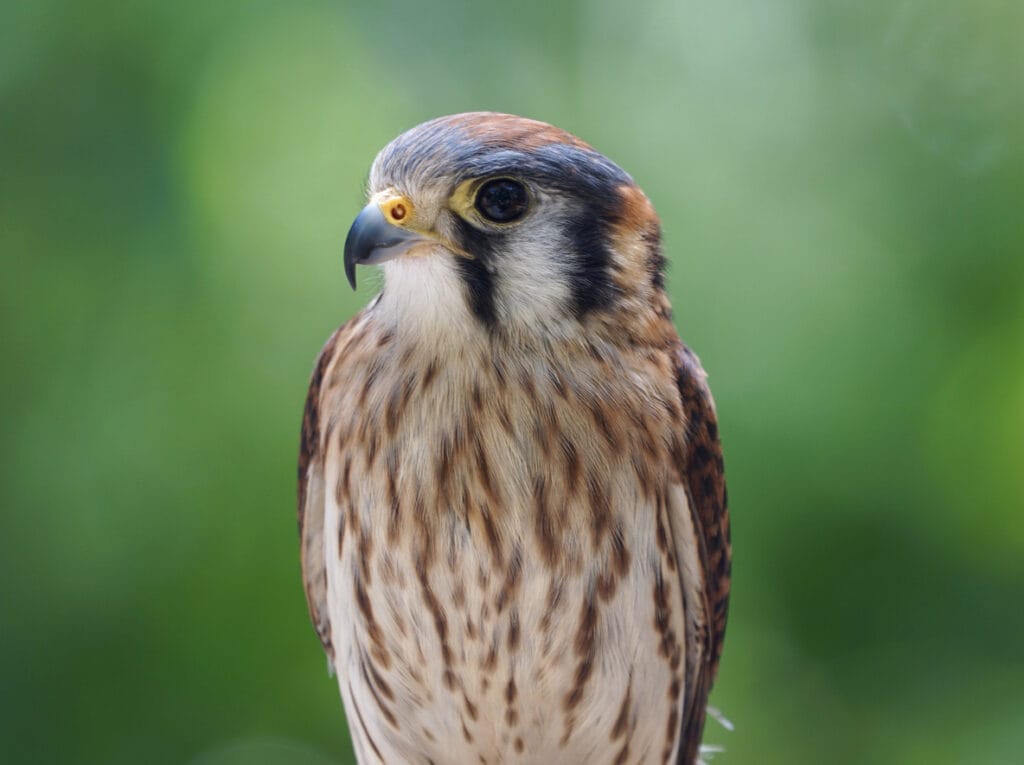
American Kestrels will look ridiculous next to any prey bird on this list, no thanks to their small size. They learned how to use it to their advantage, though, tricking their prey into thinking they intend no harm.
Despite their small size, American Kestrels are avid hunters with exceptional skills. Their other name is sparrow hawks because their primary prey is sparrows. They usually hover low on the ground, waiting for the right moment to attack.
Nothing comes without a price, though. Larger predatory birds can feed on American kestrels easily because they lack the size advantage.
7. Black Vulture
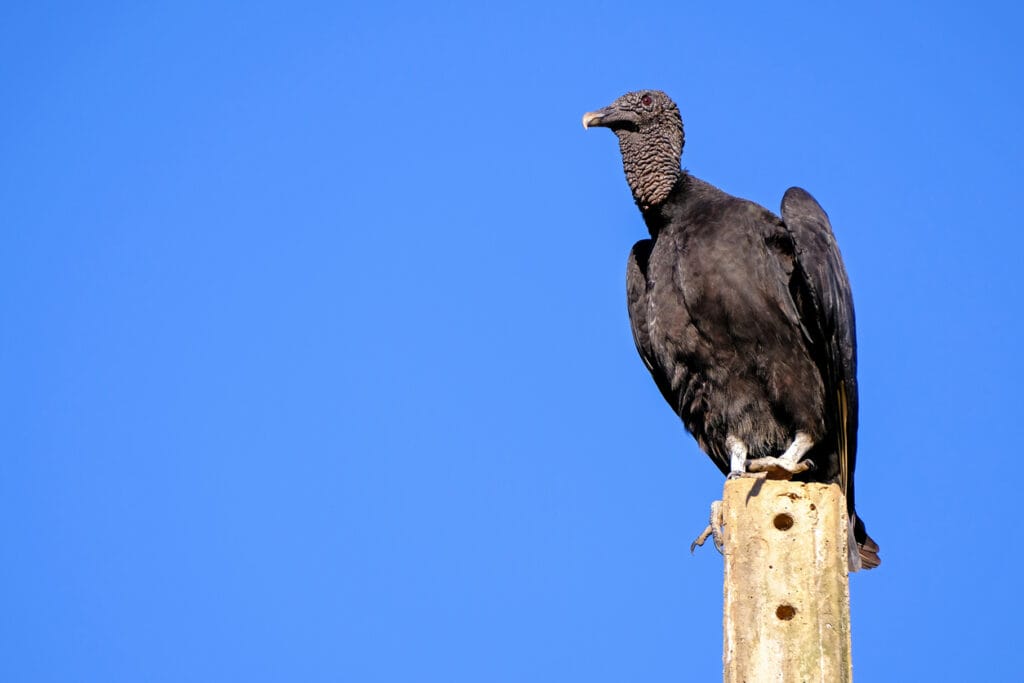
The Black Vulture has a scary face, no jokes. If you ever want to scare your friends on Halloween, a black vulture mask ought to do it.
These birds have entirely black bodies, which doesn’t help much with their scary status. They’re often mistaken for Turkey Vultures, but they have longer necks and more squared tails.
Like most birds that come in your nightmares, Black Vultures mainly feed on dead meat. Why fight an alive animal when you can eat it dead?
While you may scrunch your face up at this repulsive fact, it’s actually the reason you’re not stumbling by dead animals on your park walks. Black Vultures are doing us good by eating carrion because they’re cleaning the state of it.
Don’t let that fact fool you, though. Black Vultures will still feed on alive animals, namely lambs, cows, piglets, and calves.
8. Barred Owl
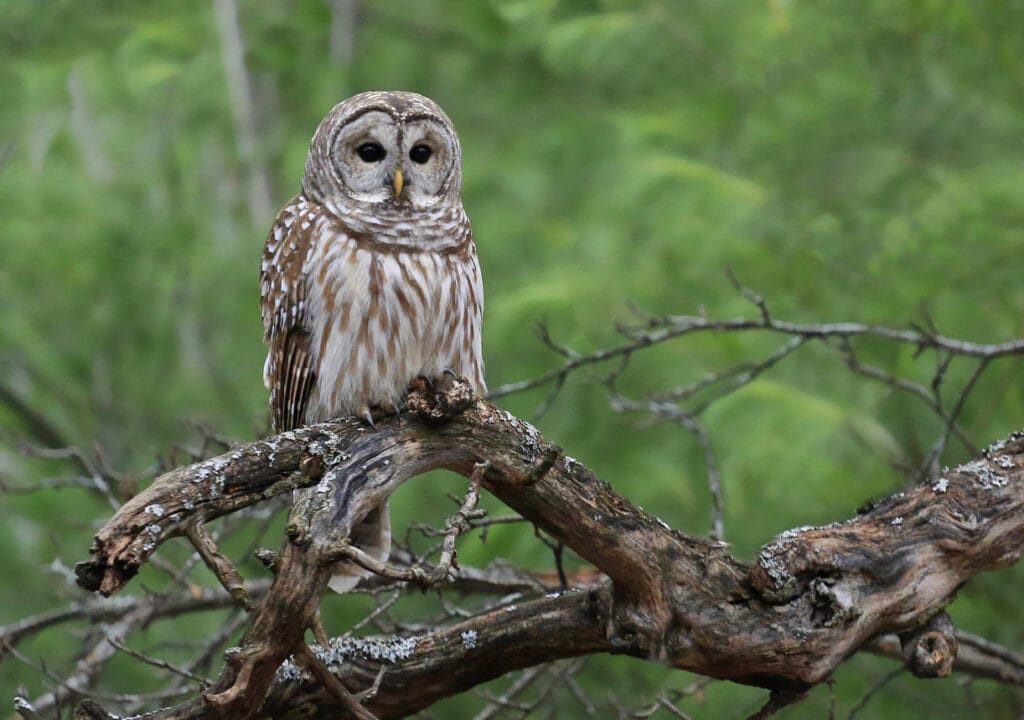
Topping off the list of the most dangerous birds globally, Barred Owls have everything it takes to be predatory birds. Their hollowed-out faces look scary, their diet consists of smaller birds, and their behavior towards humans is antagonistic. They’re not as cute as cartoons make them out to be.
Barred Owls are all year long in Florida, mating for life in the state. They don’t migrate out of the state, and their numbers have been on the rise for the last 50 years. You’ll mostly find them around mixed woodlands.
Top Tip: In January and March, you’ll find their mating pairs in mature trees.
9. Short-tailed Hawk
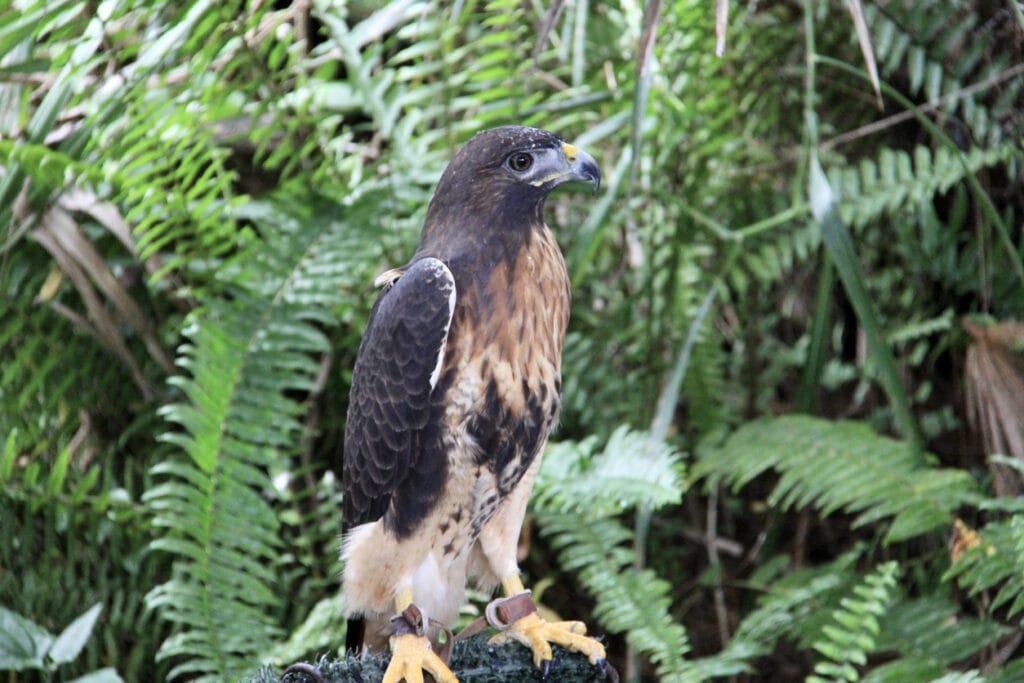
Short-tailed hawks are rare in Florida, with only around 500 birds recorded in the state. On the other hand, their numbers are rising in the southwestern US.
These champs belong to the genus buteo family, which includes vultures and eagles as well. That’s why they aren’t considered real hawks, instead referred to as buzzards.
Short-tailed hawks are primarily known for their small size. They sometimes feed on their own kind if they’re smaller, and their diet mainly consists of small birds.
10. Snail Kite
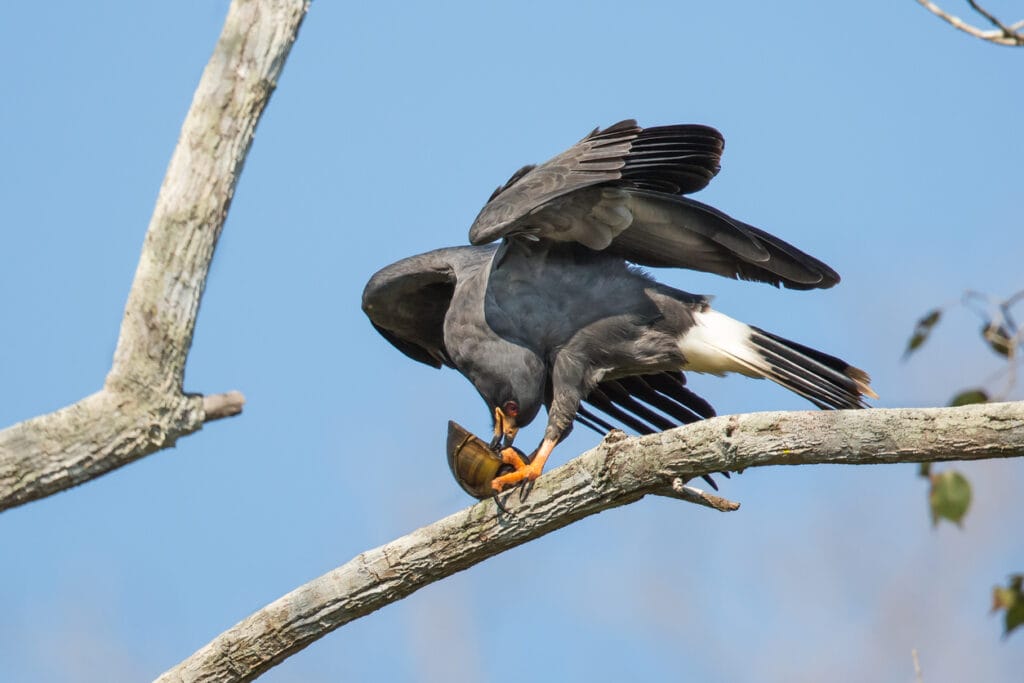
Snail Kites are native to Florida, and they apparently took a liking to the state. They’ve been living in the Everglades for long; some people now even call them Everglade Snail Kites.
These predatory birds have a riparian habitat, mostly sticking to water bodies, including marshes, rivers, streams, and lakes.
They feed mostly on apple snails, which are available abundantly near water bodies.
11. Red-Tailed Hawk
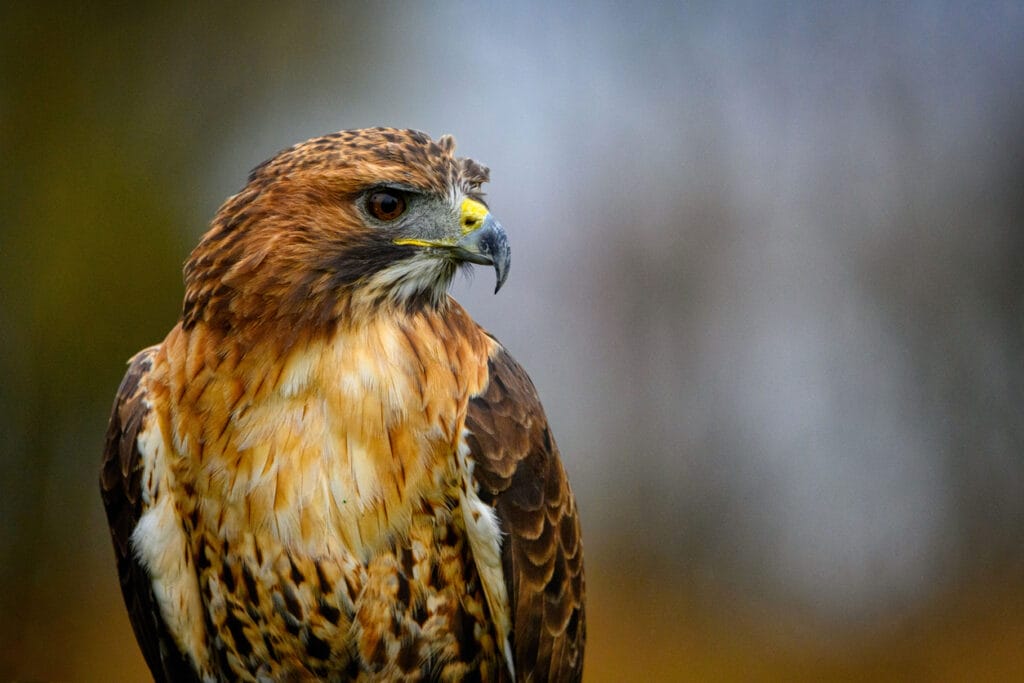
The Red-tailed Hawk is common in peninsular Florida, particularly near the Kissimmee prairie and Tampa Bay. Its population also extends down into the Florida Keys. So, you have an excellent chance to observe the predatory bird.
It’s worth noting, though, that Red-tailed Hawks may be a bit challenging to identify because they have different plumages. You’ll find an individual with a black body and another with white feathers. The only feature they all have in common is the red tail, but it’s not always enough to identify them.
These fellows can live anywhere, from urban streets and parks to woodlands.
12. Swallow-Tailed Kite
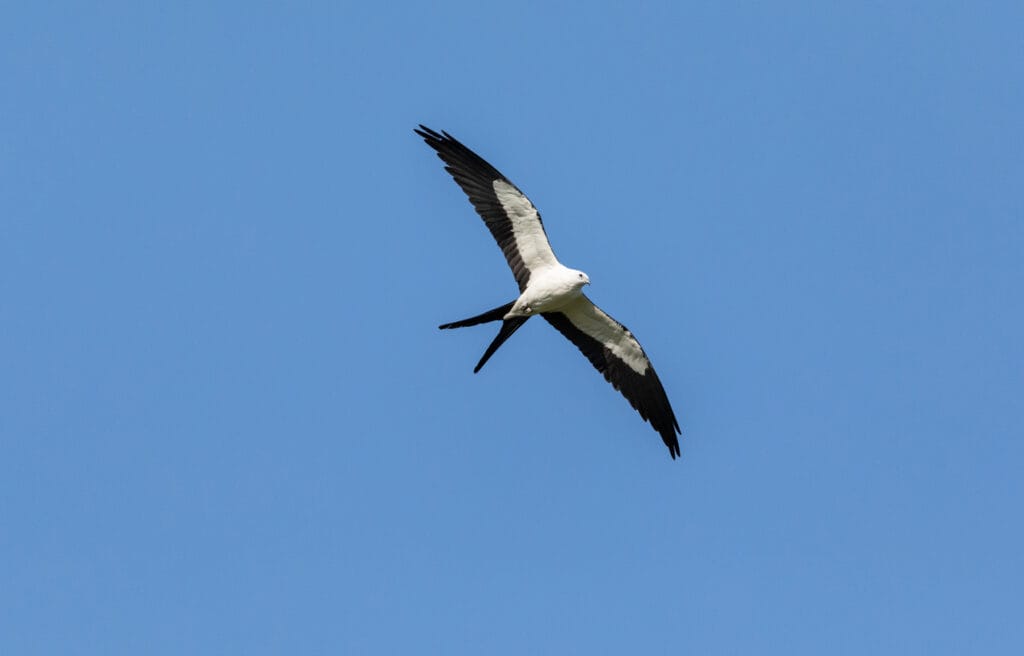
With their skinny bodies and sharp features, Swallow-tailed Kites have gained quite the reputation in Florida. They may not look as dangerous as Great Horned Owls or Cooper’s Hawks, but that doesn’t mean you should mess with them.
Kites have been known to attack humans, particularly from behind when they’re not looking. They also enjoy their predatory status a bit too much, regularly feeding on small birds and animals.
Top Tip: You can only see Swallow-tailed Kites in Florida between February and March. That’s when they migrate to the state, and they don’t stay for long.
13. Great Horned Owl
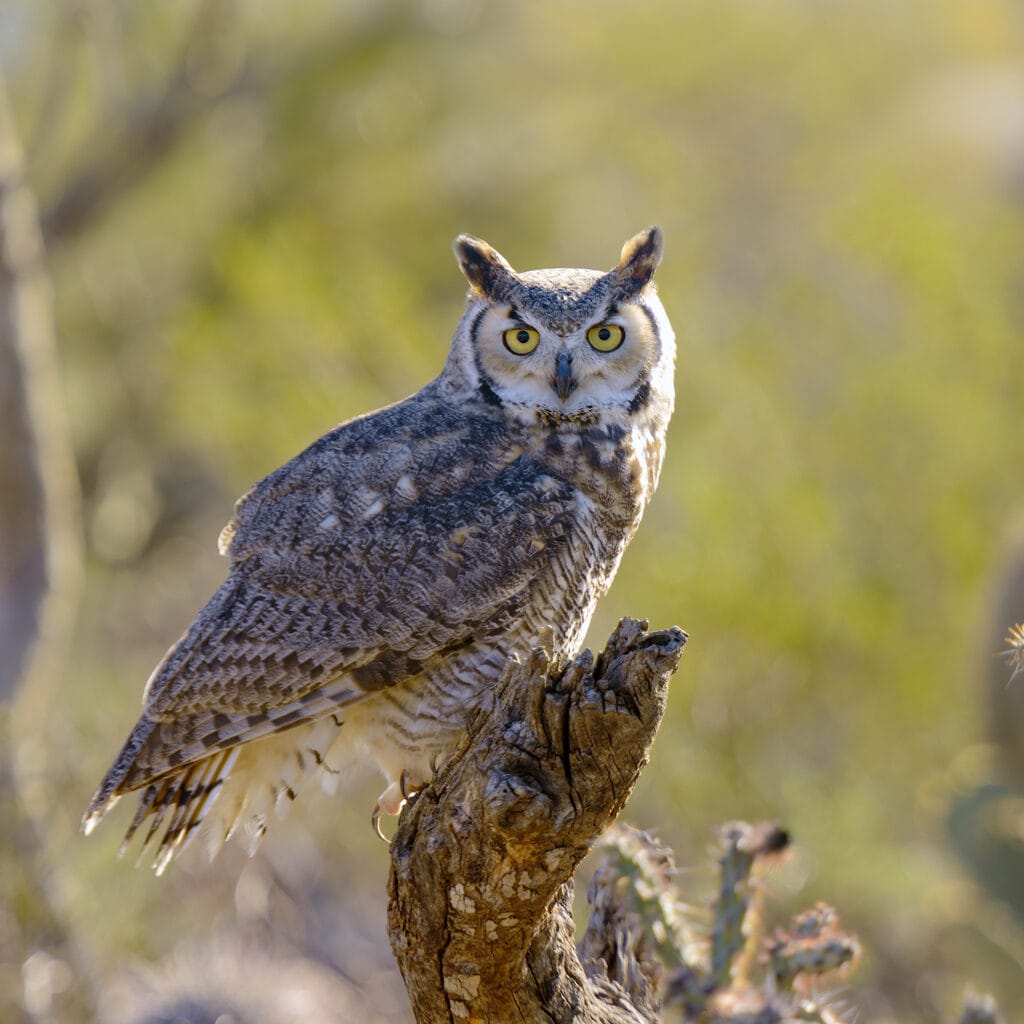
Great Horned Owls come next to Barred Owls in the list of the most dangerous birds sharing the earth with us. It’s no wonder, really. One look from these owls with their non-moving eyes, and you’ll be fleeing from the scene.
Well, you better do that because great horned owls have a history of attacking humans, particularly campers and hitchhikers. They also feed on all kinds of animals, their large size helping them.
In Florida, they stay for the whole year, nesting on tall trees in agricultural fields and forests. Their numbers are more abundant in the northern wilderness of the state.
14. Limpkin
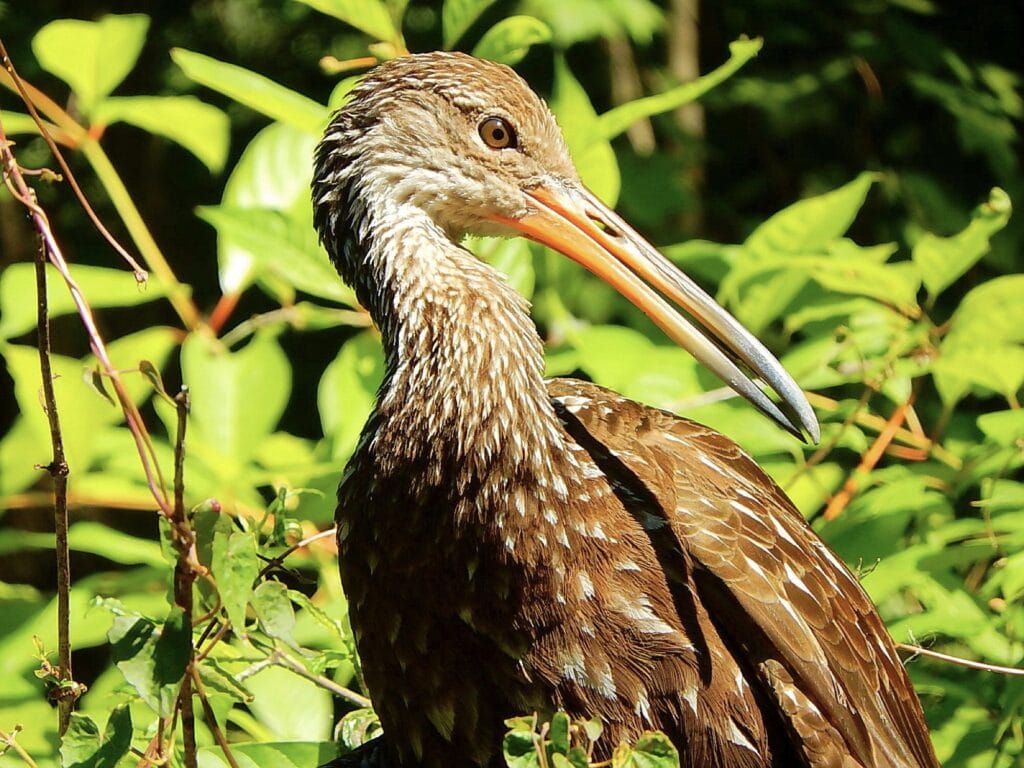
If you ever hear a wailing sound cracking through the night in Florida, no, that’s not a ghost. It’s probably a Limpkin somewhere trying to protect its territory. These birds are best known for their call that sounds like crying, which is why their nickname is ‘crying birds.’
If it was for Limpkins, they’d only feed on apple snails since that’s their favorite snack. However, because there aren’t that many snails in nature, Limpkins also feed on insects and worms they find in the water.
These large birds live near water streams and rivers, and their range spreads out from Florida and up to northern Argentina.
15. Osprey
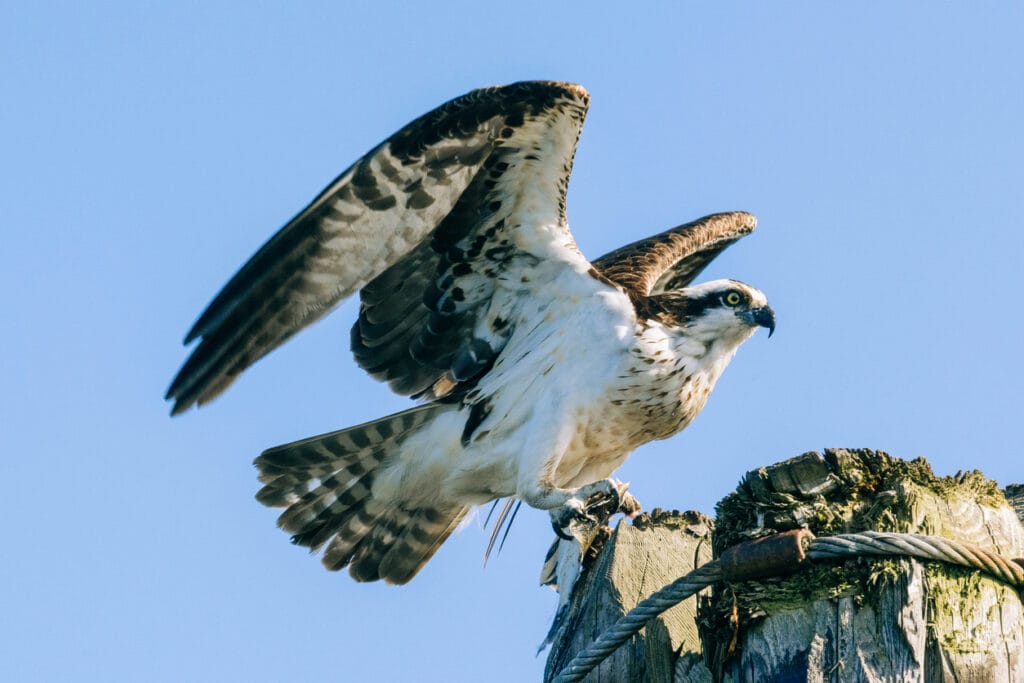
Ospreys are notorious for reaching into the water and grabbing fish right out of their comfort zones. Being piscivore raptors, their diet mainly consists of fish, explaining why all their nests will be on trees near water bodies.
Contrary to most fish-eating birds, Ospreys dive feet-first into the water. They prefer shallow water because they can’t dive under, and they feed on all different kinds of fish living there.
Aside from Peregrine Falcons, Ospreys are the only raptors on this list that live in every continent other than Antarctica. They’re widely spread, and they’re among the oldest birds alive, going back to 11 million years.
In Florida, you’ll find Ospreys all year long.
16. Eastern Screech-Owl
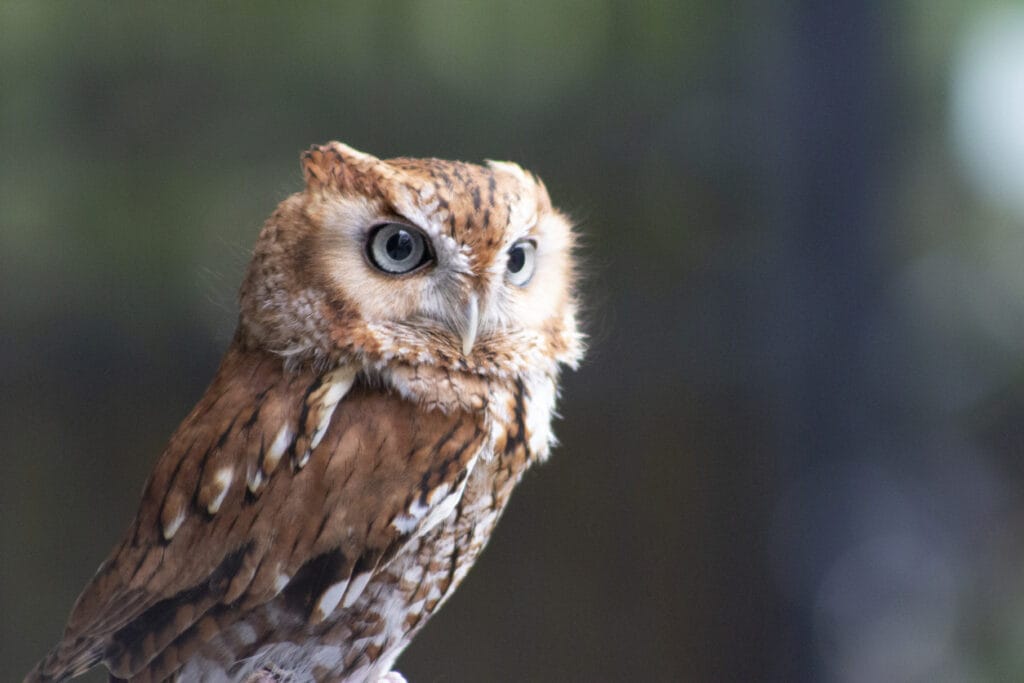
With their rusty brown bodies and feather tufts, Eastern Screech-Owls look pretty much like most North American owls.
They live mainly in parks and orchards, posing no threat to humans. You’ll find most of their nests in suburban areas.
Eastern Screeches are the smallest owls in Florida, and they live in the state for the whole year. They don’t migrate, especially in the cold months. Unfortunately, that doesn’t mean they’re easy to see around.
They’re hard to detect because they’re strictly nocturnal. You won’t see them during the day; they save all their daily activities for the night. In addition to that, they’re masters at camouflaging against their trees, their plumages helping them do so.
17. Swainson’s Hawk
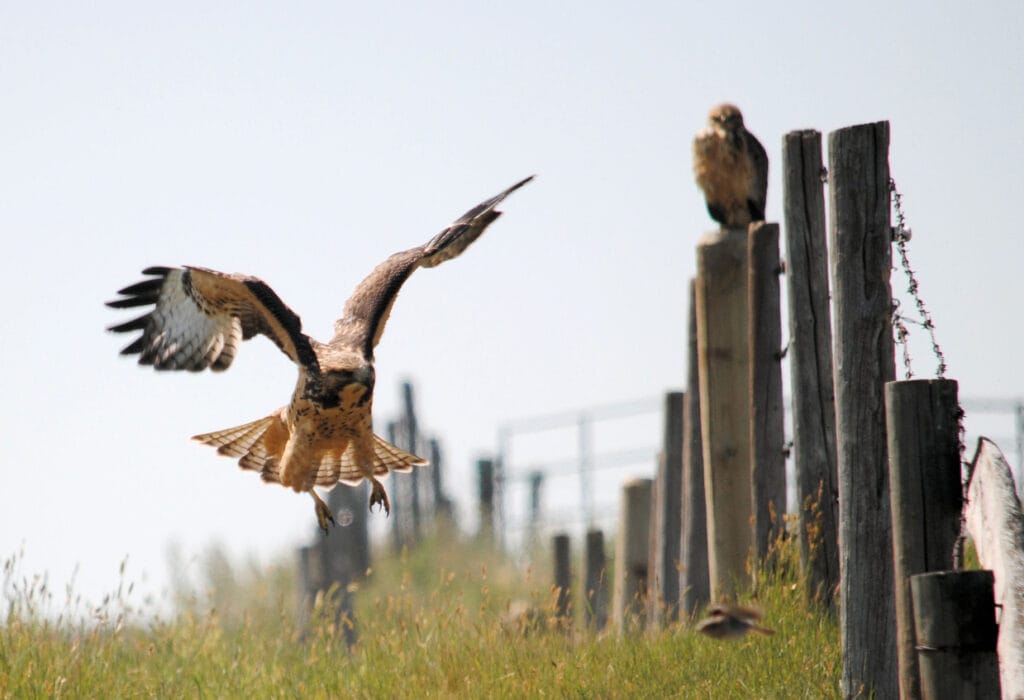
Like most hawk species that look like each other, Swainson’s Hawks look strikingly similar to red-tailed hawks.
However, you can identify them using the white patches they don on their chins. Their wings are also a bit more pointed at the edge.
In Florida, Swainson’s Hawks are spotted in April. They spend the summer in the state, breeding and feeding on other birds. These hawks will pack their things and migrate to Argentina when September comes along.
Top Tip: They’re capable of migrating 6000 miles, which is impressive even for hawks.
18. Turkey Vulture

Turkey Vultures and Black Vultures look strikingly similar, but turkey ones have red faces and shorter necks. That being so, they share the same eating habits, preferring to feed on dead animals.
Turkey Vultures can smell dead animals from eight miles away, so it’s not hard for them to find food. Everything about them is built to match their eating habits. For example, they have bald heads so that the food remnants don’t stick to them.
Additionally, their stomachs produce pretty strong acids to digest anything they eat.
They’re pretty common in Florida. If you want to see them, look for large birds with their wings making a V shape.
The Takeaway
Florida birds of prey are a sight to see. The variety makes the state a top attraction for bird watchers, and the vast green land attracts more birds every year.
If you’re lucky, you’ll be able to see a peregrine falcon breaking through the air with its uncanny speed.
Or, maybe you’ll spot a black vulture seering through the sky with its wings forming a V shape behind it. We hope you enjoyed this guide on Florida birds of prey.
FAQ
The Red-tailed Hawk is the most common bird of prey across the U.S. and in Florida.
Surprisingly, it is not the eagles. The Great Horned Owl is the most vicious and aggressive bird of prey in Florida.
Only the Bald and Golden Eagles have been reported to eBird but there is the potential for the Steller’s Sea Eagle and the White-tailed Eagle to reach its shores.
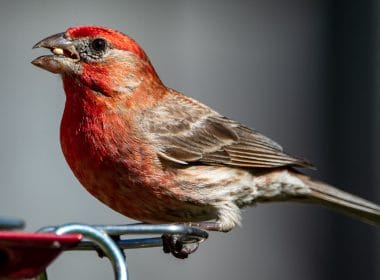
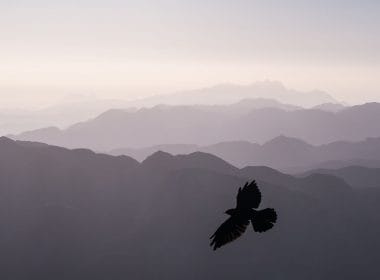
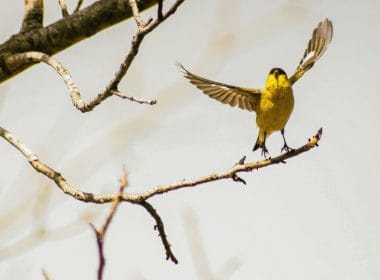
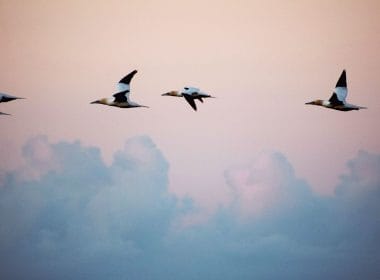
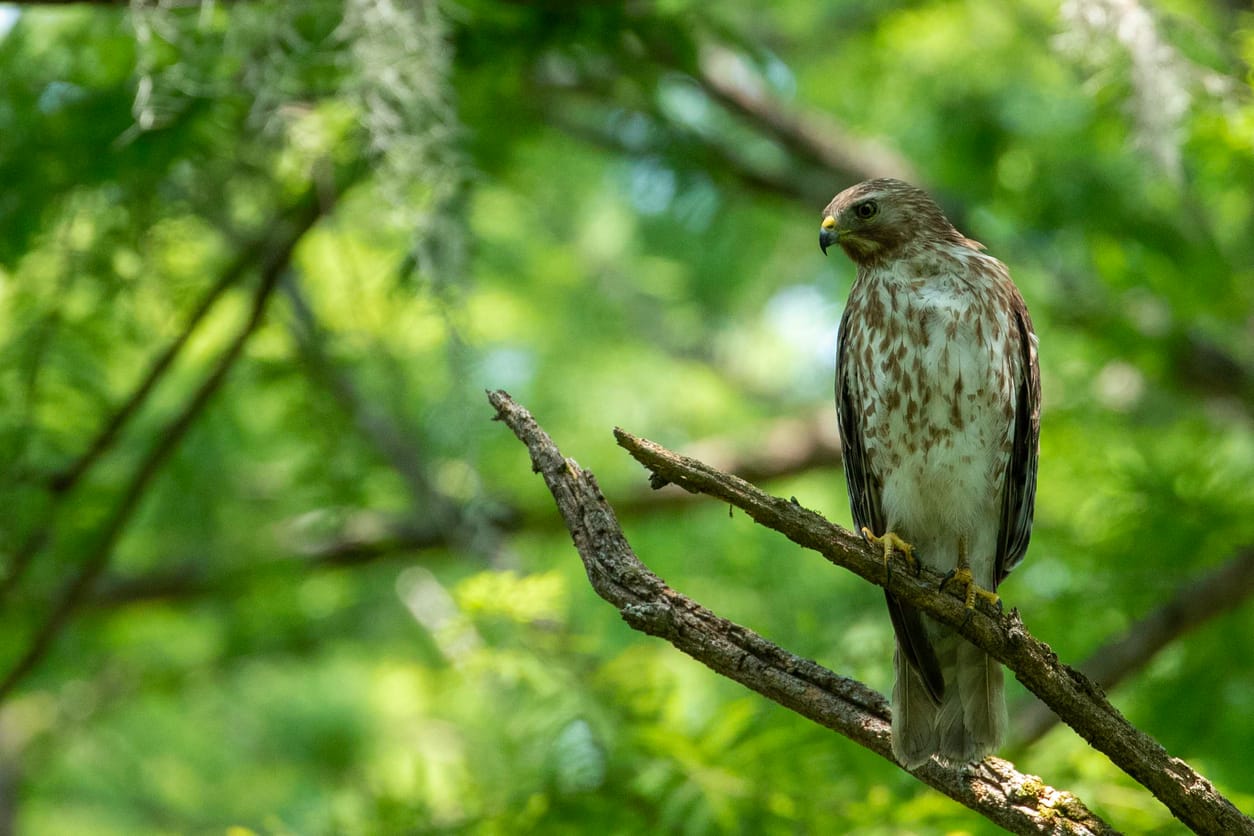
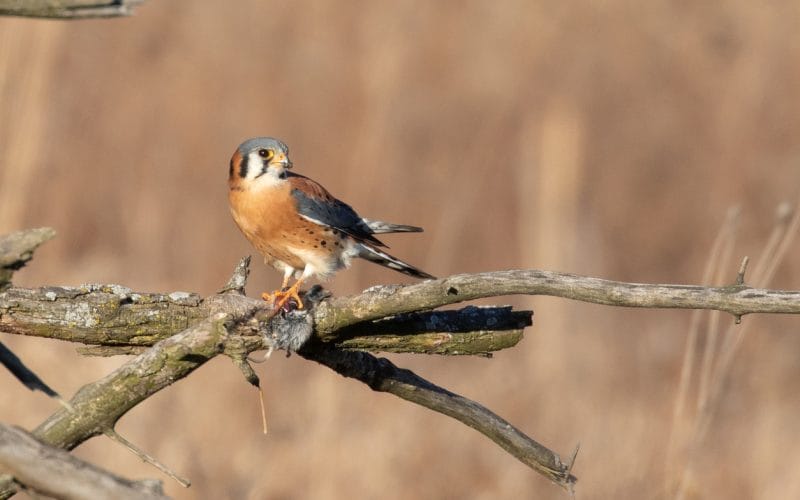
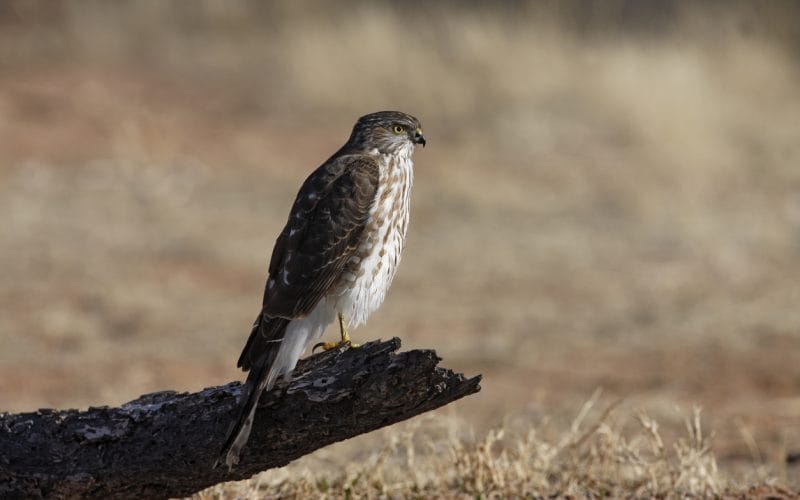
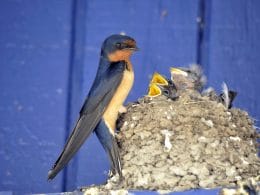
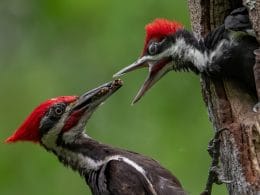
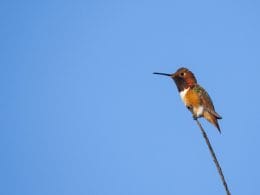
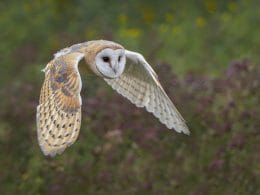
Florida woodlands are shrinking so fast. I live on the nature coast and I don’t see as many birds these days. It’s very sad. All I see is for sale signs up and down Route 19. All woodlands soon to be homes and business. Please Florida help these birds they will be gone forever.
To prevent habitate loss start a fund to buy any lands that may be up for sale in that inviroment. Taking away private property rights is not American. Uniting together to purchase that land is the best way. Look up the American conservancy web sight for some inspiration. You may be that person who will lead the way to true conservancy and inspire others threw donations of time money and resources. I’m pleased you care. Please fallow through and fallow your convictions. Conservation is for nature’s sake. Enviromentalism is for human sake and is full of hallow science and dreams. Be the wise one in the crowd, so you can make a difference. It all starts of small and grows with true inspiration, and you have the internal sense to make that happen. It is being done all accross our country and world. It just takes more of us and you to make this difference. Good luck. Your I devotes no matter the size. A d thank you for caring; Matty
Bird habitat loss is happening far too much. We have organized many protests in Sarasota to protect bird habitat (Celery Fileds region) from development. So far they have succeeded to stop encroachment of developers…There is strength in a unified response to threats.